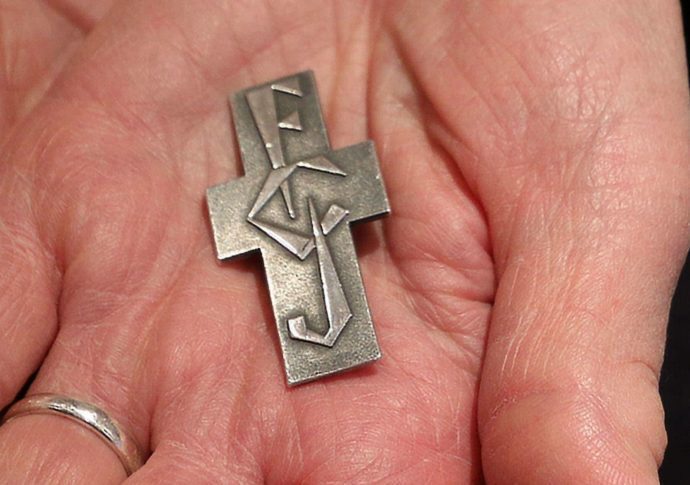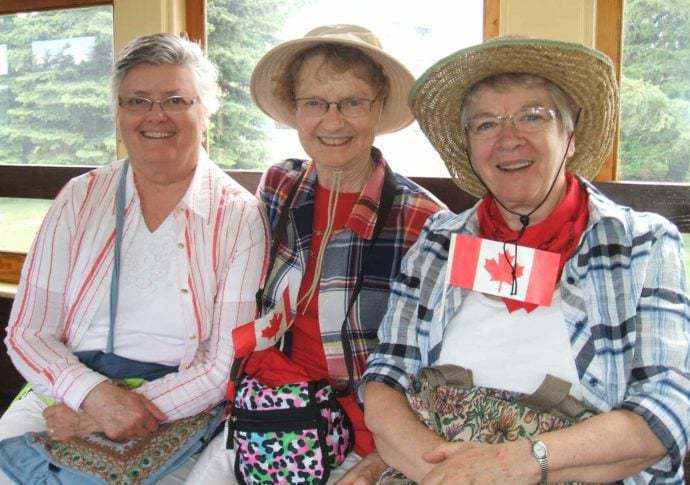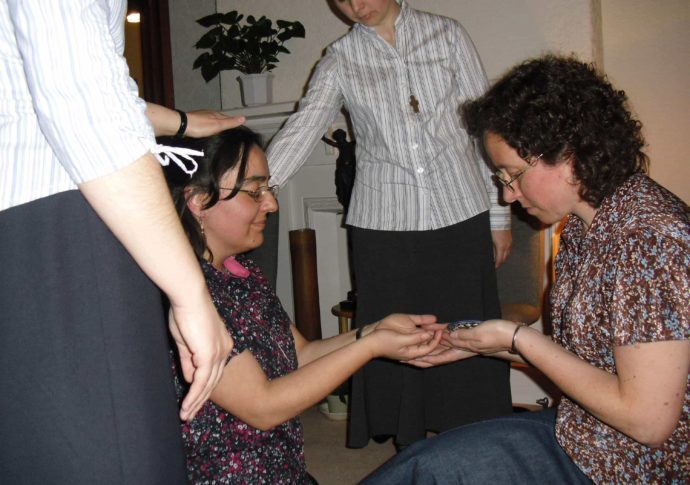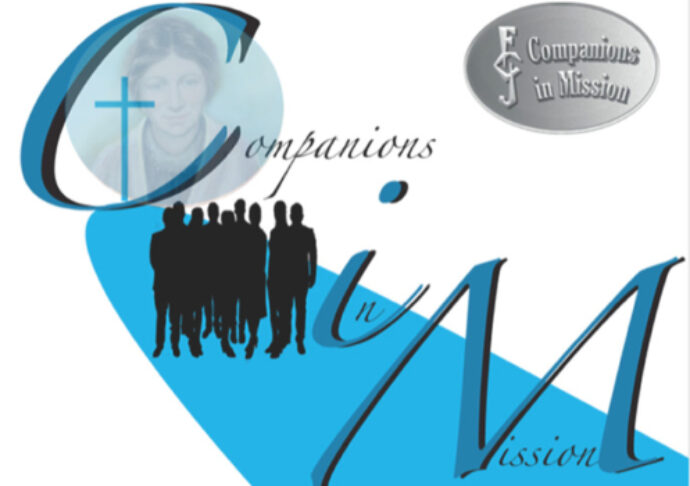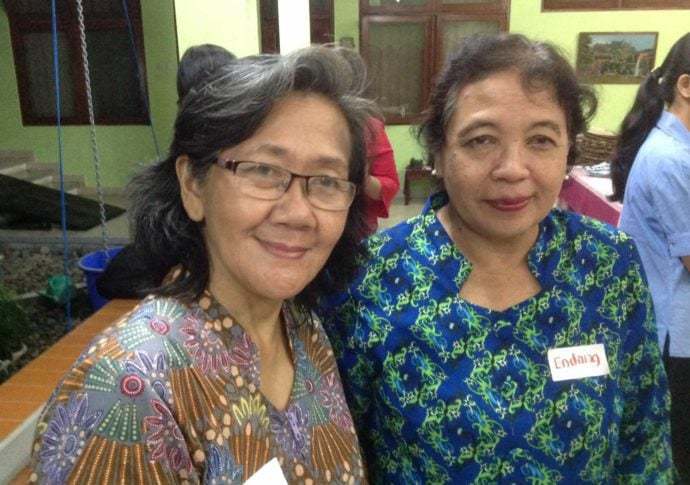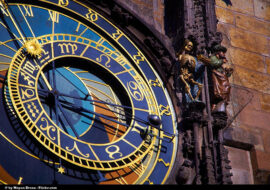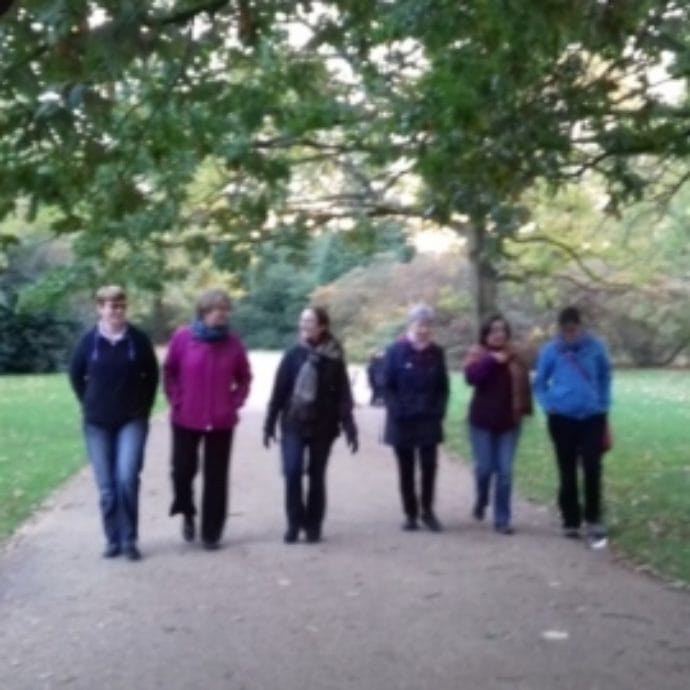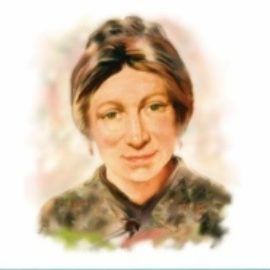On these days just before Advent starts, Sr Teresa White fcJ reflects on the ways in which time is marked. This article first appeared in Church Times and is reproduced here with permission.
On 28 November, Advent will beckon us to re-enter the circle of liturgical time. The Christian cycle of feasts and seasons mirrors God’s time: having no beginning and no end, it touches into eternity, returning to bless us again and again. But, each Advent, we live again the unique atmosphere of prayerful waiting and expectation which precedes our celebration of the coming in human time of Jesus Christ.
Time, the Wisdom of Solomon tells us, is but a shadow that passes away. But what is this “time” in which we live and move and have our being? We describe and explain change by means of two constructs: linear time and circular time. The way we think of time — the way we calculate its passing — affects the way we live together and has consequences for our happiness. Linear time is regular, prosaic, easy to compute, and action-orientated; circular time is flowing, poetic, reflective, and open to mystery.
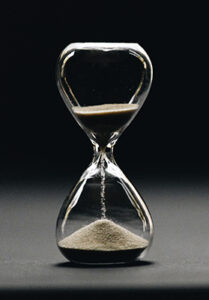 Linear or sequential time has a beginning, a duration, and an end. The ticking of a clock, marking the seconds and minutes and hours, is its symbol, and the calendar its concrete expression: Monday followed by Tuesday, December followed by January. Linear time can rule our lives as we rush from one activity to the next: appointments in our diaries, deadlines to be met.
Linear or sequential time has a beginning, a duration, and an end. The ticking of a clock, marking the seconds and minutes and hours, is its symbol, and the calendar its concrete expression: Monday followed by Tuesday, December followed by January. Linear time can rule our lives as we rush from one activity to the next: appointments in our diaries, deadlines to be met.
Has our obsession with linear time trapped us in stress-filled schedules that keep us perpetually on our toes? Does it brainwash us into thinking that everything must be done quickly; all problems solved instantly? Does our compulsive busyness affect our overall well-being and prevent our truly living?
No matter how we respond to those questions, it is good to be aware that the linear is not the only method of marking the passing of time. We can sense, for example, the circadian rhythm that governs our sleep-wake cycle without consulting our digital clocks or watches. By noting the position of the sun and the moon, we can calculate time in a circular mode, aware of the rotation of days and seasons.
Circular time is more tranquil than linear; it encourages a more reflective approach to life and living. Events that are beyond our capacity to see, understand, or record are nevertheless embraced in the circle of life.

Circular time takes its own course, rooted in the observation of nature: in rising and falling, growth and decay, activity and resting. Its symbol is not a ticking clock, but a sundial, whose gnomon registers the time of day by the shadow cast on the dial as the earth orbits the sun.
Planet earth revolves on its axis with no determinable points of start or finish. Morning comes, evening comes; then the cycle resumes after the darkness of night. Human beings seem to have an innate sense of this cyclical mode of time, which recognises and respects the rhythms of the natural world.
The Industrial Revolution brought profound changes to the ways in which people lived and worked. In the context of manufacturing — with allotted tasks to be completed in set hours, and pre-determined targets to be met — linear time became all-important. In the modern era, as human populations moved from agricultural to urban settings, the linear sense of time became far more pronounced, especially in the West.
Those who migrate to the cities may retain in their psyches a remnant of the sense of circular time, but, as the urban mindset grows, linear time often becomes dominant; and city-dwellers learn not to waste time, because time is money. In some parts of the world, however – even today, and in spite of globalisation – the circular mode of time, which has no specific function, appears to trump the purposeful linear.
While linear time can hold us hostage to its demands for usefulness and productivity, circular time – more expansive, more generous – offers us greater freedom to become better, happier inhabitants of the universe. Yet the two concepts are not mutually exclusive: circular time and linear time can and often do coexist in our lives.
In Advent, we are invited to enter into that quiet space where we can become aware of “the One who is”. Rabindranath Tagore says it well:
Have you not heard his silent steps? He comes, comes, ever comes.
Every moment and every age, every day and every night he comes, comes, ever comes.Rabindranath Tagore
Two thousand years ago, Jesus came to bring good news to the people of the troubled world of his time. He comes today to give the same message: in the midst of the turmoil, the sorrows and disappointments of our everyday lives, God’s faithful love is at work in our broken world.
As we mourn the devastating impact of the coronavirus pandemic on every nation and culture, we cannot help but wonder what the future holds for us. The contemplative spirit of circular time would seem to encourage us to seek healing for everyone, knowing that “no one is safe until all are safe.”
The earth, which is our common home, damaged and misused by humanity, is in a state of unparalleled crisis. A healthy and sustainable development would seem to favour circular time, which respects the rhythms of nature and does not force the workings of the eco-system to fit into a predetermined time-frame.
Climate change as we are already experiencing it is almost certainly nature’s signal to us to change our mindset. And the Church founded by Jesus is in profound disarray, with the shameful conduct of many who were regarded as his close followers causing untold suffering to thousands of innocent people.
If we are more attuned to circular time – God’s time – while sincerely trying to make reparation for our sinful deeds, we will recognise that the problem of the evil things that we do in this world will never be fully resolved this side of heaven. But a time will come when the sick and the homeless will be gathered into the circle of God’s love; when refugees will be guided to a place that they can call home; when the sick will find healing, and the lonely, comfort.
Paul Tillich says that often it is in such moments of helplessness that we experience the transforming power of God’s presence in our lives. “Grace strikes us,” he says, “when we are in great pain and restlessness. . . It strikes us when, year after year, the longed-for perfection of life does not appear, when the old compulsions reign within us as they have for decades, when despair destroys all joy and courage” (Dynamics of Faith, Harper 1958).
The source of our consolation is the coming of Emmanuel, God-with-us. This is the grace of Advent, knowing that God is with us:
Courage! Do not be afraid. Look, your God . . . is coming to save you.
Isaiah 35.6
Sister Teresa White fcJ’s book, Hope and the Nearness of God: The Lent Book 2022, will be published by Bloomsbury on 9 December. Read more of Sr Teresa’s contributions to our website.
Photo credits: Prague astronomical clock – Wikimedia/Moyan Brenn on flickr. Hour glass photo by Photo by Nathan Dumlao on Unsplash. Sundial photo by Mick Haupt on Unsplash






